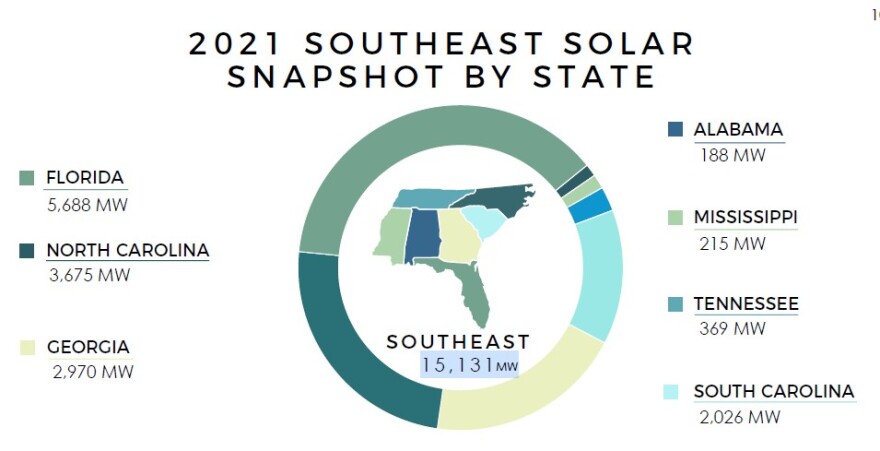A new report says North Carolina is continuing to slip in the rankings for solar energy capacity in the Southeast and nationally.
North Carolina has long been a leader in solar, at one time ranking No. 1 in the Southeast. But the Southern Alliance for Clean Energy says in its annual "Solar in the Southeast" report that faster growth in Florida combined with slower growth in North Carolina has changed the picture.
"In last year's report, you may recall that Florida had just overtaken North Carolina as the leader in the Southeast. And they have never looked back," said Bryan Jacob, the report's author.

Florida had about 5.7 megawatts of installed solar capacity at the end of 2021. North Carolina had about 3.7 megawatts. Jacob predicts that by 2025, Georgia (now about 3 megawatts) will also pass North Carolina.
Overall, the Southeast had about 15 megawatts of solar capacity at the end of last year. That's about triple the number in 2015, according to the report.
"Our region continues to see significant growth," said Steve Smith, executive director of the Southern Alliance for Clean Energy. "We believe, and have believed for a long time, that solar is going to be a dominant workhorse technology for solving the climate crisis and for the future of the utility industry in our region."
Meanwhile, in rankings by utility, Duke Energy remains the Southeast's top solar energy producer. But, Florida Power & Light is expected to take over the lead by 2025.
Jacob said Florida Power and other utilities in the region have ramped up the addition of solar. "The Duke utilities on the other hand, all three of them, had really high forecasts early on, and they've been consistently dialing them back," Jacob said.
The vast majority of solar power in the seven-state Southeast region is from utility-scale solar farms. Rooftop solar panels remain just a fraction.
The alliance has reduced its forecast for growth over the next couple of years because of supply chain disruptions and uncertainty over whether Congress will pass a climate bill and extend or widen tax breaks. Other variables include possible changes in state policies, Jacob said.
In North Carolina, Duke Energy's proposed carbon plan now under review by state regulators calls for measured growth in solar. One question is whether the North Carolina Utilities Commission will adjust the plan to call for more solar and fewer natural gas plants in the next few years.
North Carolina once ranked No. 2 nationally in solar. It's now No. 4, behind California, Texas and Florida.







